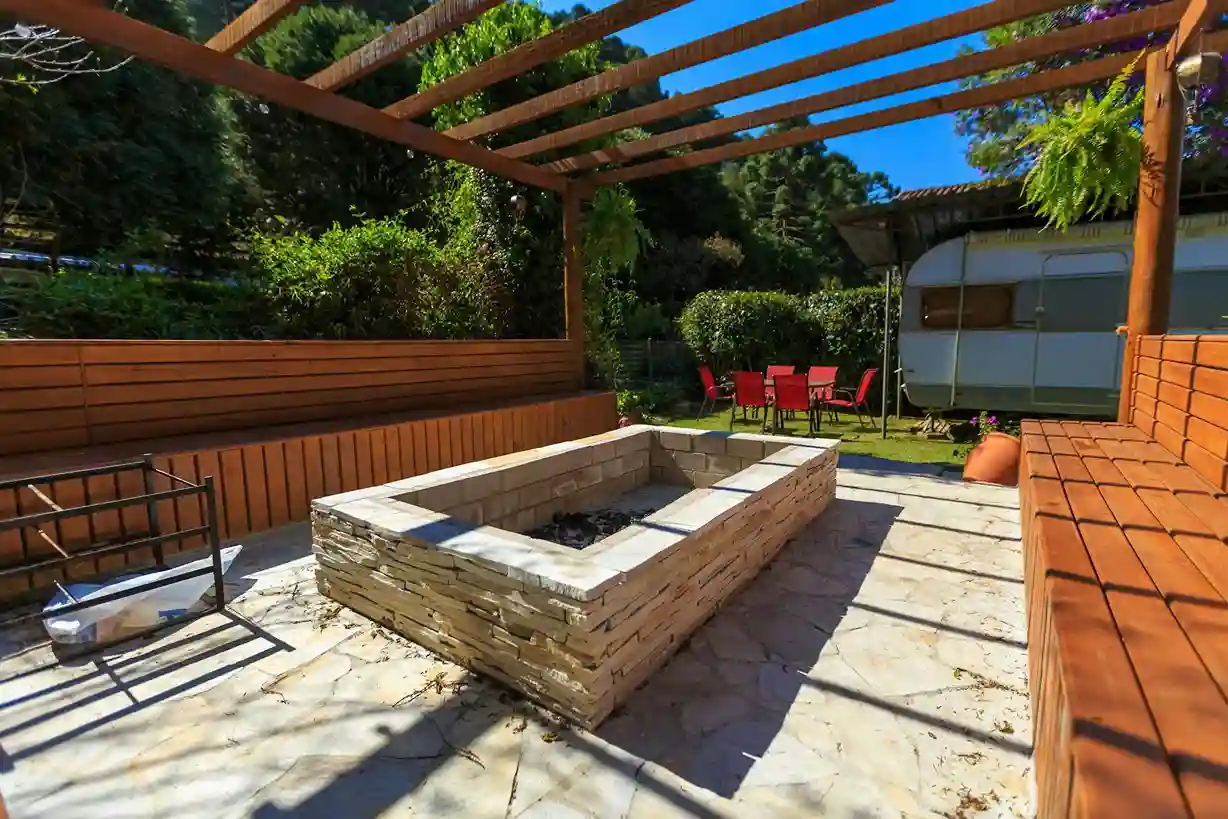Transform Your Outdoor Space: A Complete Guide to Pergola Installation

Pergolas are a beautiful and functional addition to any outdoor space, offering shade, style, and structure. Whether you're creating a cozy nook in your backyard or enhancing your patio for entertaining, pergola installation is a rewarding project that can completely transform your home's exterior. In this comprehensive guide, we’ll walk you through everything you need to know about pergola installation—from planning and materials to building and maintenance.
What is a Pergola and Why Should You Install One?
A pergola is an outdoor structure consisting of columns that support a roofing grid of beams and rafters. This open framework can be left bare or adorned with climbing plants, fabric covers, or retractable canopies. Unlike a gazebo or a pavilion, pergolas typically have an open roof, which provides partial shade while allowing air and light to filter through.
Benefits of Installing a Pergola
-
Enhanced Aesthetics: Pergolas add architectural interest to your garden or patio.
-
Defined Outdoor Space: They create a distinct area for relaxation, dining, or entertaining.
-
Customizable Design: Pergolas can be tailored to your personal style and home architecture.
-
Increased Property Value: A well-designed pergola can boost your home’s curb appeal and resale value.
Planning Your Pergola Installation
Before you begin the construction process, careful planning is essential to ensure your pergola meets your needs and complies with local building codes.
1. Determine the Purpose and Location
Ask yourself: What is the primary function of your pergola? Will it serve as a dining area, a lounge space, or a walkway cover? The answer will influence its size, style, and placement.
When choosing a location:
-
Ensure it complements your home’s architecture.
-
Consider sun exposure and wind direction.
-
Check for underground utilities before digging.
2. Check Local Building Regulations
Many municipalities require permits for outdoor structures like pergolas. Verify:
-
Height restrictions
-
Setback requirements from property lines
-
HOA guidelines (if applicable)
Getting this step right can save you from costly fines or forced removal later.
Choosing the Right Materials
Pergolas can be built using various materials, each with unique characteristics and maintenance needs.
1. Wood Pergolas
Pros:
-
Natural look
-
Easily customizable
-
Affordable
Cons:
-
Requires regular maintenance (staining, sealing)
-
Vulnerable to termites and weather damage
Popular wood options include cedar, redwood, and pressure-treated pine.
2. Vinyl Pergolas
Pros:
-
Low maintenance
-
Weather-resistant
-
Clean, modern appearance
Cons:
-
Limited color choices
-
Higher upfront cost
3. Metal Pergolas (Aluminum or Steel)
Pros:
-
Durable and strong
-
Modern aesthetic
-
Low maintenance
Cons:
-
Can be expensive
-
May heat up in the sun
Design Considerations for a Pergola
Pergola design is not one-size-fits-all. It should reflect your lifestyle, space constraints, and aesthetic preferences.
1. Size and Scale
The dimensions of your pergola should correspond to the size of your outdoor area. A small pergola can make a big impact in a tight courtyard, while larger yards might benefit from expansive structures.
2. Roof Style
You can choose between:
-
Open-top for light and airflow
-
Louvered or slatted for adjustable shade
-
Retractable canopies for full coverage on demand
3. Attached vs. Freestanding
Attached Pergolas connect to your home and are ideal for patios or decks.
Freestanding Pergolas offer flexibility in placement and are great for gardens or poolside retreats.
Step-by-Step Pergola Installation
While hiring professionals ensures a smooth process, DIY pergola installation is also achievable with the right tools and skills. Here’s a basic outline:
Step 1: Gather Tools and Materials
You’ll need:
-
Posts and beams
-
Joists or rafters
-
Concrete or anchors
-
Drill, screws, level, tape measure
-
Ladder and safety gear
Step 2: Prepare the Site
-
Mark the corners and dig holes for the posts (typically 2-3 feet deep).
-
Ensure level ground and clear any obstacles.
Step 3: Set the Posts
-
Place the posts in holes and fill with concrete.
-
Use a level to ensure they are plumb and aligned.
-
Let the concrete cure for at least 24 hours.
Step 4: Attach the Beams and Rafters
-
Secure beams horizontally across the posts.
-
Add rafters or slats across the beams using brackets or screws.
-
Ensure even spacing and stability.
Step 5: Apply Finishing Touches
-
Sand rough edges and apply sealant or paint if necessary.
-
Consider adding lighting, curtains, or planters.
Cost of Pergola Installation
Costs can vary significantly based on materials, size, and labor. Here’s a general breakdown:
| Type | DIY Cost Range | Professional Cost Range |
|---|---|---|
| Wood | $1,000 - $4,000 | $3,000 - $8,000 |
| Vinyl | $2,000 - $6,000 | $4,000 - $10,000 |
| Metal | $2,500 - $7,000 | $5,000 - $12,000 |
Custom pergolas or those with electrical fixtures may increase costs further.
Maintaining Your Pergola
Routine maintenance will keep your pergola looking great and functioning well for years.
Wood Maintenance
-
Re-stain or paint every 1-2 years.
-
Check for rot or insect damage.
Vinyl and Metal Maintenance
-
Clean with mild soap and water.
-
Check for loose screws or corrosion annually.
Enhancing Your Pergola
Once your pergola is up, personalize it to make the space truly yours.
Add Shade and Privacy
-
Install retractable canopies or curtains.
-
Use lattice or trellis sides for climbing plants.
Incorporate Lighting
-
Hang string lights or pendant lamps.
-
Add solar-powered post lights for ambiance.
Decorate with Greenery
-
Train vines like wisteria or grapevines.
-
Use hanging baskets or vertical planters.
Why Hire a Professional Pergola Installer?
While DIY pergola installation can save money, hiring a professional offers several advantages:
-
Expert design guidance
-
Knowledge of building codes
-
Faster, safer construction
-
Long-term durability
Always vet contractors carefully—look for licensed professionals with positive reviews and transparent pricing.
Final Thoughts
Pergola installation is a fantastic way to enhance the usability and appearance of your outdoor space. Whether you opt for a DIY build or hire professionals, a pergola offers both form and function. With thoughtful planning, the right materials, and a bit of creativity, your pergola can become the centerpiece of your backyard sanctuary.
- Art
- Causes
- Crafts
- Dance
- Drinks
- Film
- Fitness
- Food
- Jocuri
- Gardening
- Health
- Home
- Literature
- Music
- Networking
- Alte
- Party
- Religion
- Shopping
- Sports
- Theater
- Wellness



